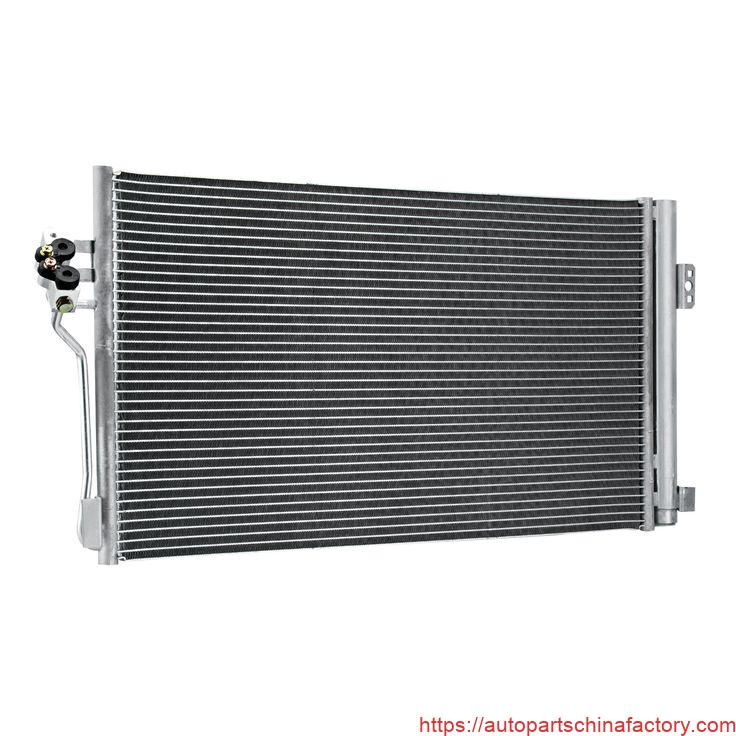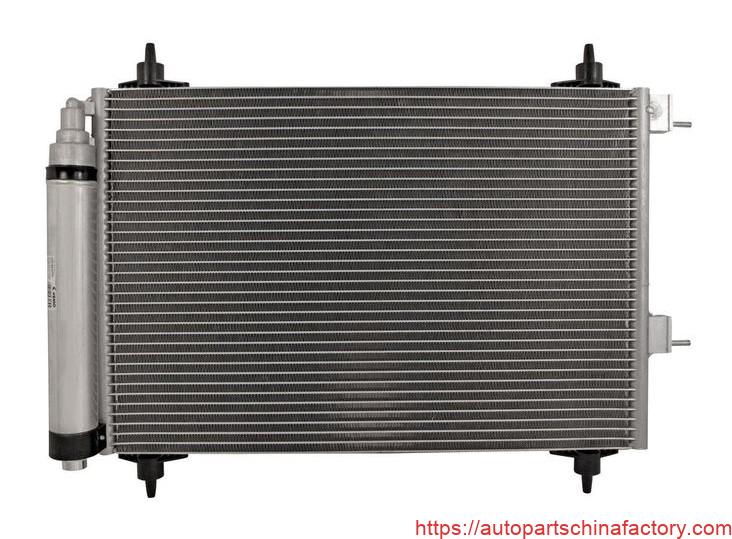- A+
The air conditioning (AC) system in your car is a complex network of components working in harmony to keep you cool. While you might be familiar with the compressor or the refrigerant, one vital, often overlooked, part is the AC condenser.

What is an Automotive AC Condenser?
At its core, an automotive AC condenser is a heat exchanger. Its primary job is to release the heat absorbed by the refrigerant in your vehicle's cabin to the outside air. Think of it as the "radiator" for your car's AC system.
It's typically located at the front of your vehicle, usually in front of the engine's radiator, to maximize airflow.
Types of Automotive AC Condensers
While they all perform the same basic function, condensers come in a few different designs, each with its own characteristics:
- Serpentine Condensers: These are older designs featuring a single tube that snakes back and forth with fins attached. They are less efficient than newer designs but are still found in some older vehicles.
- Parallel Flow Condensers: This is the most common type found in modern vehicles. They feature multiple, smaller tubes running parallel to each other, significantly increasing the surface area for heat exchange and improving efficiency.
- Subcooling Condensers: These are an advanced type of parallel flow condenser that includes an additional pass to further cool the liquid refrigerant, leading to even greater efficiency and cooling performance.

How Does an AC Condenser Work?
The AC condenser plays a critical role in the refrigeration cycle:
- Hot Gas In: The compressor sends high-pressure, high-temperature gaseous refrigerant to the condenser. This gas has absorbed heat from the vehicle's interior.
- Heat Dissipation: As the hot gas enters the condenser, it flows through a series of tubes and fins. Air passing over these fins (either from the vehicle's movement or from cooling fans) absorbs the heat from the refrigerant.
- Condensation: As the refrigerant loses heat, it changes state from a hot gas into a high-pressure, warm liquid. This process is called condensation, hence the name "condenser."
- Liquid Out: The now liquid refrigerant then flows out of the condenser and on to the expansion valve or orifice tube, ready to continue the cooling cycle.
Common Use Cases and Scenarios
The AC condenser is always at work whenever your car's air conditioning system is on. You'll especially appreciate its function in scenarios like:
- Hot Summer Days: When the ambient temperature is high, the condenser works overtime to dissipate the maximum amount of heat, ensuring your cabin stays cool.
- Stop-and-Go Traffic: In low-speed or stationary conditions, the engine's cooling fans (which often also serve the condenser) become crucial to pull air through the condenser and maintain heat exchange.
- Defrosting/Defogging: Even when you use your AC for defrosting, the condenser is active as part of the dehumidification process, removing moisture from the air.
Manufacturing Locations
Automotive AC condensers are manufactured globally, with major production hubs in:
- Asia: Countries like China, Japan, South Korea, and Thailand are significant producers due to their robust automotive manufacturing industries and supply chains.
- Europe: Nations such as Germany, France, and Italy also have established automotive component manufacturers that produce condensers.
- North America: The United States and Mexico are key manufacturing locations, serving the regional automotive market.
Many well-known automotive parts suppliers, including Denso, Valeo, Behr Hella Service, and Delphi, have manufacturing facilities in these regions.
Understanding the role of your AC condenser can help you appreciate the engineering that goes into keeping your car's cabin comfortable, no matter the weather outside.


